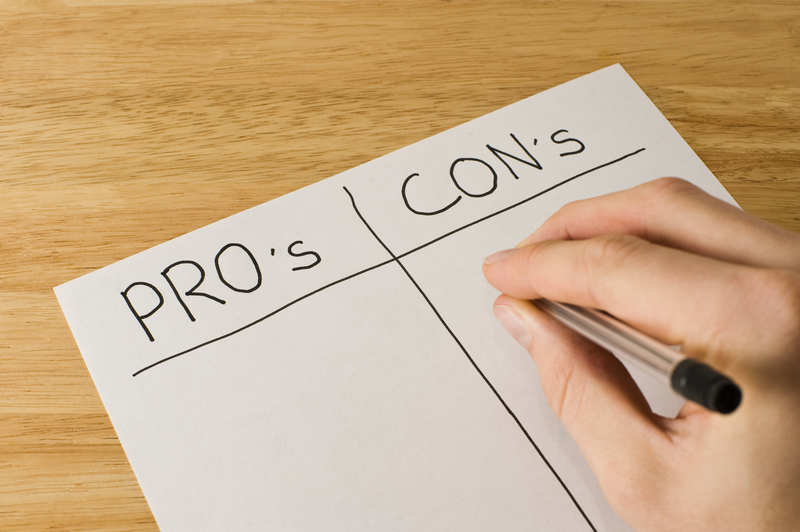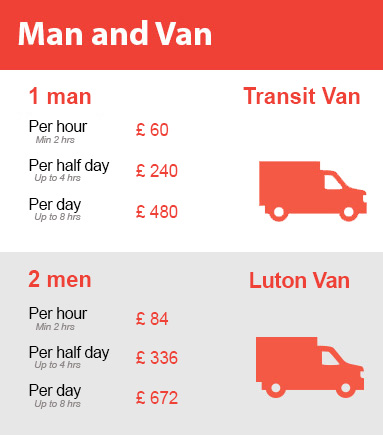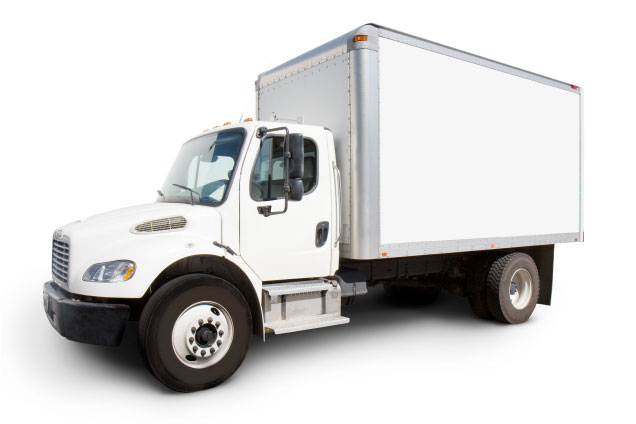Become a Packing Pro with Our Comprehensive Moving Techniques
Posted on 09/06/2025
Become a Packing Pro with Our Comprehensive Moving Techniques
Moving can be exciting, but for many, packing is the most stressful aspect of a relocation. Whether you're moving across town or preparing for a long-distance move, efficient packing is essential to ensure a smooth transition, protect your belongings, and save time and money. Become a packing pro with our comprehensive moving techniques, expert advice, and insider tips to help you pack like a professional.
Why Packing Properly Matters
Want a stress-free moving day? It all starts with correct packing practices. Being methodical, organized, and using the right strategies can mean the difference between chaos and calm. Here are some reasons why proper packing techniques matter:
- Prevents damage to fragile and valuable items.
- Saves time during unpacking and settling in.
- Reduces moving expenses by optimizing box space and minimizing movers' time.
- Keeps small objects from getting lost along the way.
- Makes inventory and organization easier before and after the move.

Essential Packing Supplies: What You Need Before You Start
Ready to become a master packer? You'll need the right tools. Before tackling the packing process, gather these essential supplies:
- Sturdy moving boxes in various sizes (small, medium, large, wardrobe)
- Packing tape (preferably heavy-duty)
- Bubble wrap and packing paper for fragile items
- Scissors and box cutters
- Permanent markers for labeling
- Ziploc bags for tiny items, screws, and parts
- Blankets or moving pads for furniture protection
- Stretch wrap for securing drawers, doors, and loose pieces
- Old towels or clothing for extra padding
Pro tip: Never skimp on quality supplies--cheap boxes or insufficient tape can result in costly damages later.
Packing Like a Professional: Step-by-Step Master Techniques
Not sure where to begin? Follow this step-by-step guide to pack efficiently, maximize space, and keep your belongings safe.
1. Create a Packing Plan
- Start early: Begin at least a month before your move. Procrastination causes unnecessary stress and mistakes.
- Pack by room: Tackle one room at a time, labeling boxes accordingly.
- Prioritize items: Set aside essential things you'll need before and during the move (like toiletries, a few dishes, chargers), and pack them last.
2. Declutter Before You Pack
- Sort through belongings--donate, sell, or recycle items you don't need.
- This reduces unwanted clutter at your new home and saves money on moving costs.
3. Gather and Label Boxes
- Build and seal all boxes before starting.
- Label on the sides and top using permanent markers. Include room, contents, and whether it's fragile.
- Color-code boxes with markers or stickers for a faster, organized unpacking experience.
4. Pack Room by Room: A Proven Method
Kitchens
- Use small boxes for heavy items like dishes and cans.
- Wrap plates vertically in bubble wrap and stack cups inside one another with packing paper in between.
- Secure small appliances with packing paper, then box cords separately in labeled bags.
Bedrooms
- Use wardrobe boxes for clothes on hangers. Fold and pack other clothing in suitcases or medium boxes.
- Place shoes in plastic bags to keep pairs together and avoid dirt transfer.
Bathrooms
- Pack toiletries in sealed plastic bags to prevent leaks.
- Use small boxes for medicines and label them clearly.
Living Room & Decor
- Disassemble furniture if possible, keeping screws and hardware in labeled bags taped to the item.
- Wrap electronics in bubble wrap and keep cords organized with zip ties and labeled bags.
- Protect artwork and mirrors with blankets or moving pads, and place them in specialty boxes if possible.
5. Fill Boxes Safely and Efficiently
- Don't overpack: Heavier boxes are more likely to break and difficult to move.
- Place heavy items at the bottom, lighter on top.
- Fill empty spaces with towels, clothes, or packing paper to prevent shifting.
- Always reinforce the bottom of boxes with extra tape.
6. Handle Fragile Items with Extra Care
- Wrap each piece individually in bubble wrap or packing paper.
- Mark boxes as "Fragile" and "This Side Up."
- Use specialty boxes for stemware and dishes, if available.
7. Stay Organized with a Packing Inventory
- Create a detailed list of items in each box--including serial numbers for electronics and valuables.
- This will simplify your unpacking process and provide a record in case of loss or insurance claims.
Advanced Packing Methods for Moving Pros
If you've mastered the basics, take your skills to the next level with these professional packing techniques:
- Use vacuum bags for clothing and bedding to save space and protect from moisture.
- Bundle-cord technique: Roll cables and cords neatly and secure with Velcro ties.
- Layer protection: Pad the bottom and top of each box with extra cushioning for added security.
- Drawer packing: For short moves, leave lightweight items in drawers, securing with stretch wrap.
- Packing kits: Use wardrobe, dish, and glass packing kits for specialty items for extra protection.
- Photograph electronics setups and furniture assemblies to aid with quick set-up in your new home.
Moving Day: Loading the Truck Like a Professional
Packing right is only half the job--knowing how to load your moving truck can make a world of difference. Here's how to become a real packing pro by expertly loading your belongings:
- Start with large, heavy items (sofas, appliances, and mattresses) at the back of the truck.
- Stack boxes securely, heaviest on the bottom, fragile boxes on top.
- Fill gaps with soft items like pillows, blankets, or clothing bags to prevent shifting.
- Strap down tall or awkward furniture using moving straps to secure in place.
- Keep essentials close to the truck door for first-day access.
Common Packing Mistakes and How to Avoid Them
Don't let rookie errors derail your move! Here's what to watch out for (and how to fix them):
- Overfilling boxes--Stick to weight limits, especially for books and dishes.
- Neglecting to label--Always mark boxes with both contents and destination room.
- Insufficient padding--Protect every box's contents with bubble wrap, paper, or padding.
- Using flimsy boxes--Opt for strong, purpose-built moving boxes over grocery store cast-offs.
- Leaving packing until the last minute--Plan a detailed packing schedule and start early.
Unpacking Like a Packing Pro
The final stretch of your relocation journey is just as important. Here's how to unpack quickly without the stress:
- Refer to your inventory list to check off boxes as they arrive.
- Start with essentials--unpack your survival box (toiletries, bedding, kitchen basics) first.
- Unpack room by room, starting with bedrooms and bathrooms for easy comfort on your first night.
- Save decor and non-essentials for last, setting up functional spaces before making it beautiful.
- Break down boxes and packing materials as you go to keep pathways clear.
Packing Pro Tips for Special Situations
- Moving with kids or pets: Pack a first-day kit with favorite toys, snacks, and comfort items.
- Climate-sensitive items: Use climate-controlled trucks for art, electronics, and delicate items.
- Packing for storage: Clearly label items you'll need access to and pack them at the front of your storage unit.
- Moving overseas? Check customs requirements for prohibited or restricted items and pack accordingly.

Frequently Asked Questions: Expert Answers for Packing Like a Pro
How early should I start packing before my moving date?
Start packing non-essentials (seasonal clothing, books, decor) at least 4 weeks before your move. The sooner you start, the less stressful your moving day will be.
Is it better to use plastic bins or cardboard boxes?
Cardboard moving boxes are economical, stack easily, and are recyclable. Plastic bins work well for storage and can be reused, but may take up more space in the truck. A mix of both is ideal for different needs.
What's the best way to protect my TV and electronics?
Use original boxes when possible. If not, wrap electronics in bubble wrap, pad with towels or moving blankets, and keep cords organized in labeled bags. Mark boxes as "Fragile" and "This Side Up."
How do I pack valuable documents and jewelry safely?
Keep important items with you during the move. Use a secure, portable box for documents and small valuables. Avoid packing them in the moving truck to minimize risk.
Conclusion: Become a Packing Pro with Our Time-Tested Moving Strategies
Efficient packing is the secret to a successful move. From gathering the right supplies and decluttering to room-by-room strategies and advanced pro tips, you can become a packing pro with a little planning, organization, and patience. By following our comprehensive moving techniques, you'll protect your belongings, reduce stress, and settle into your new home with ease. Remember: the more effort you put into packing, the smoother your move will be.
Ready to pack like a pro? Use this guide for every move--big or small--and enjoy a seamless transition to your next adventure.





